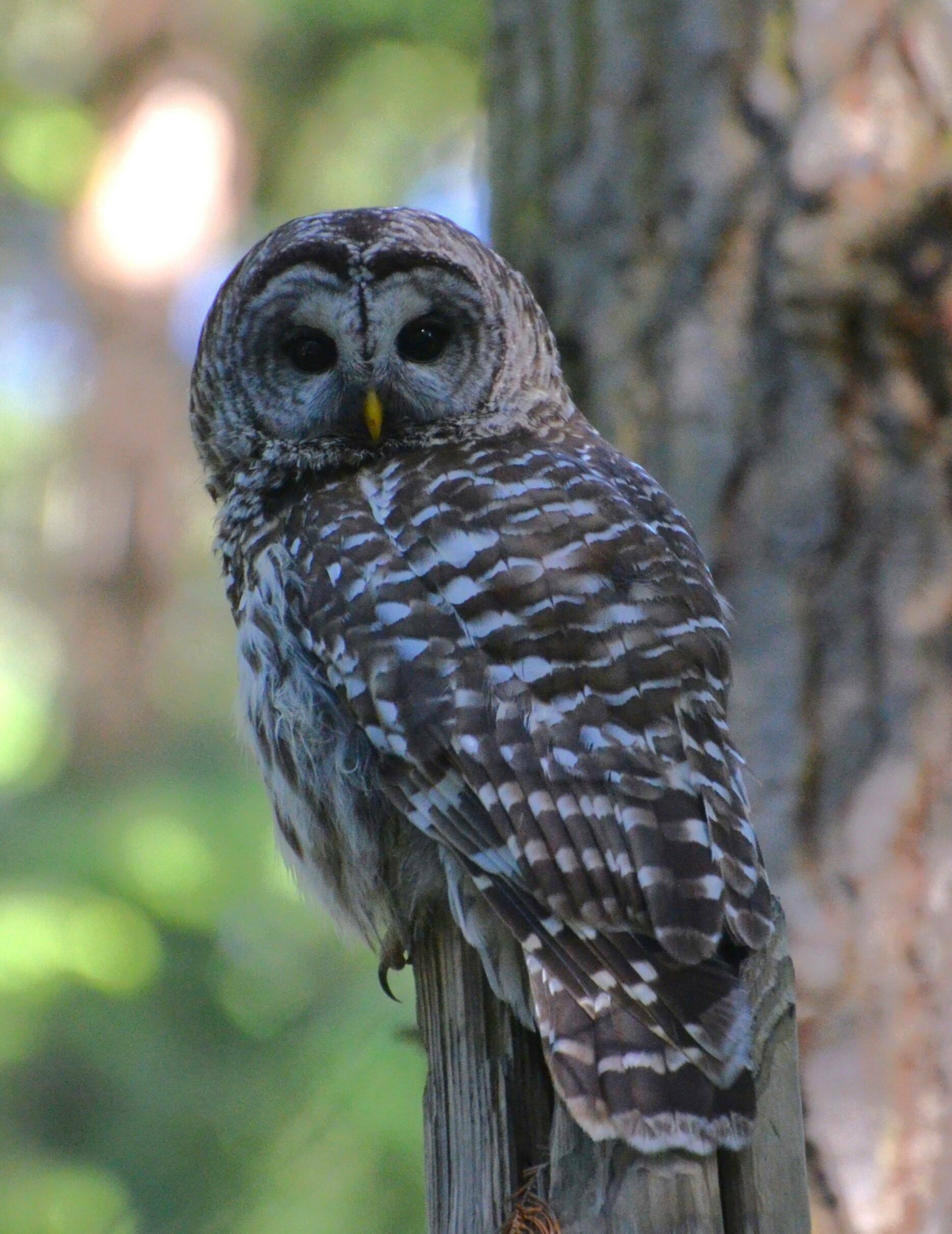The revelation that it may take $1.35 billion to fund U.S. Fish and Wildlife Service’s barred owl management plan over 30 years has brought Animal Wellness Action to call upon President-elect Donald Trump’s Department of Government Efficiency to nix the program. On Whidbey, wildlife experts don’t agree on the controversial strategy.
The Fish and Wildlife Service finalized the decision in late August, approving a plan to kill 450,000 barred owls over 30 years, the largest raptor-killing plan in the world. In November, Animal Wellness Action filed a lawsuit in U.S. District Court, claiming the plan targets a species protected by the Migratory Bird Treaty Act.
Barred owls are native east of the Great Plains and south of the U.S.-Canada border. European settlement, fire suppression, bison and beaver extirpation and deer and elk overharvest grew forest habitat, allowing the barred owl’s western expansion. The first one was documented in Western Washington in 1972.
Northern spotted owls, native to the Pacific Northwest, have seen an 80% decline in range in the past two decades as a direct result of human and barred owl expansion. Northern spotted owls found their way on the Washington Department of Fish and Wildlife’s endangered list in 1988, and in 1990 were listed as threatened under the Endangered Species Act. According to state Fish and Wildlife, at this rate within 10 years northern spotted owl numbers may decline so low they will no longer play an active role in the ecosystem.
Marnie Jackson, executive director of Whidbey Environmental Action Network, said that protecting legacy forests would be a better protection strategy, as habitat destruction is the root cause of spotted owls’ population decline.
In Washington, legacy forests have been decimated by the Department of Natural Resources over the last decades despite a 1997 commitment to restore old growth forests on around 15% of public forest land by protecting biologically rich older forests, she wrote in an email.
To target barred owls as the culprit in spotted owl decline ignores the real problem, she said, which is human-caused habitat loss. A single, costly intervention into an ecosystem is very likely going to be less effective than a holistic plan for supporting habitat health, and the culling plan has no guarantee of success.
Further, the Fish and Wildlife Service has not done its due diligence to analyze the potential environmental impact of the barred owl management strategy, she said. The most reasonable alternative would be to place a moratorium on logging legacy forests.
However, according to Steve Ellis, former president of the Whidbey Audubon Society, there is no reasonable alternative.
“This should have been done decades ago,” he wrote in an email. “The damage the barred owls have already done is permanent. There is no other workable strategy beyond culling.”
On Whidbey, western screech owls have been extirpated by barred owls, he said. Northwestern salamanders, red-legged frogs and others have been wiped out and cannot recover due to habitat fragmentation.
“Northern saw-whet owls will be the next to go,” he said. “It’s sad that so many people who should know better care nothing for biodiversity in their support for barred owls. Entire ecosystems are changing because of barred owls.”
The National Wildlife Foundation funded a $4.5 million grant request by the Hoopa Valley Tribe to kill up to 1,500 barred owls. Animal Wellness Action extrapolated the cost per owl will be $3,000, for a grand total across 30 years to be $1.35 billion.
“The grant to the Hoopa, who are the most practiced owl hunters in the United States, underscores that the FWS talking point that ‘volunteer’ hunters would conduct the shooting program is folly,” said Jennifer McCausland, senior vice president of the Center for a Humane Economy, in a press release. “We’ve said from the start that this program would have an enormous price tag, but these numbers have even startled us.”
Ellis pointed out this number doesn’t come from a Fish and Wildlife Service report, and others estimate a lower cost.
Animal Wellness Action assembled a coalition of more than 240 organizations opposing the barred owl management plan, including over 20 Audubon organizations and owl protection and raptor rehabilitation centers.
While not everyone may agree on the issue of barred owls, Jackson feels Washington is “resoundingly pro-habitat and pro-climate resilience.”
“I am hopeful that our new commissioner of public lands will align the agency’s actions with public sentiment in Washington,” she said. “Such action will protect not only the spotted owl but also our children and grandchildren, for whom a livable climate depends upon forest retention.”




